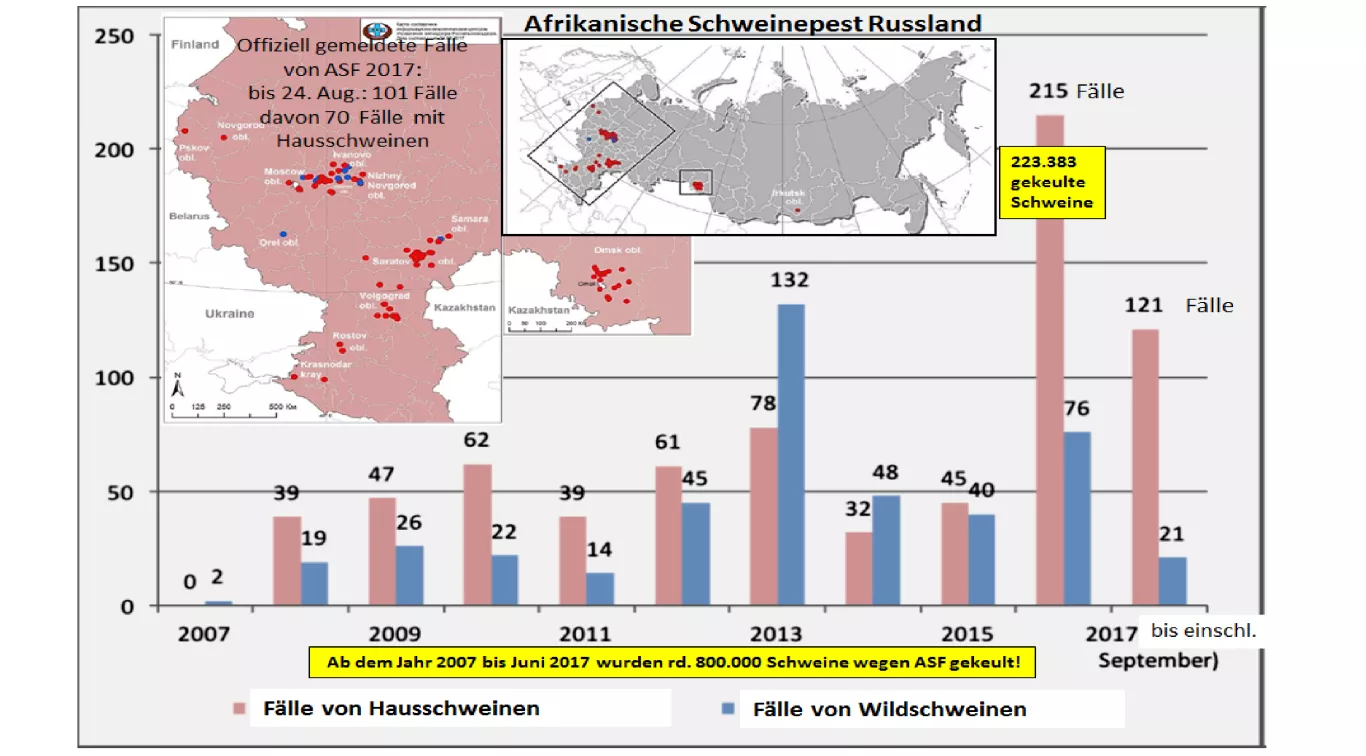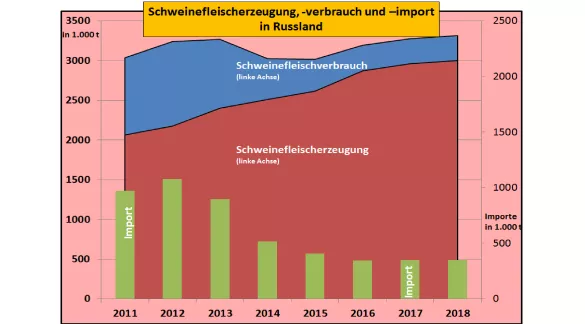Russia: African swine fever (ASF) and no end in sight African swine fever has spread over long stretches since its introduction and spread across much of Russia. At present, the epidemic continues on the other side of the Urals progressing to southern Siberia.The hardest hit areas are the central district south of Moscow and the southern district , where pigmeat production has become increasingly concentrated. Since 2007 until June 2017, approx. 800,000 pigs culled . In 2016 alone there were approx. 225,000 animals . For the current year 2017, up to and including Sept.2017 approx. 142 cases registered, whereby the quantities are still unknown. Pig production in Russia is concentrated on a few companies on an industrial scale. The 20 largest companies produce approx. 60% of the 43 million pigs per year . A pest outbreak in such units is always associated with large losses. In the 10 largest farms in 2016, approx. 218,000 pigs or 1.9% of the stock lost.The stables located in the vast outskirts are hermetically sealed by fences, but transmission is more frequent by coworkers than by boars or other transmitters. Infested meat or sausage products brought along for food unintentionally enter the housing units in this way. In the past, the backyard postures with little hygiene and free access provided great problems. In the case of dead animals, these were often buried or otherwise disposed of, forming the source of new infections. In some regions, these forms of housing have already been banned.Despite all controls, a load of several thousand tons of infected pork has recently been shipped to the east coast of Siberia . For the year 2018, it is expected that the epidemic will continue, but the controls will be further tightened.Russia's pork production has risen so much that it is rapidly approaching the brand for self-sufficiency . For the year 2018, one expects a domestic production of approx. 3 million tonnes with a consumption of 3.3 million tonnes. As recently as 2014, more than 1 million tonnes of pork were imported. As of 1 Dec. 2017, imports from Brazil amounted to almost 200,000 tonnes due to the detection of unauthorized growth promoters blocked.The forecasts for a possible Russian pork export are currently being turned back in the face of the unresolved ASF epidemic. The prices for pork halves have dropped significantly. The quotations are from approx. 2.35 € / kg fell in the summer months 2017 to less than 1.80 € per kg. There are increasing opinions that the state-subsidized expansion of pigmeat production is ceasing.



